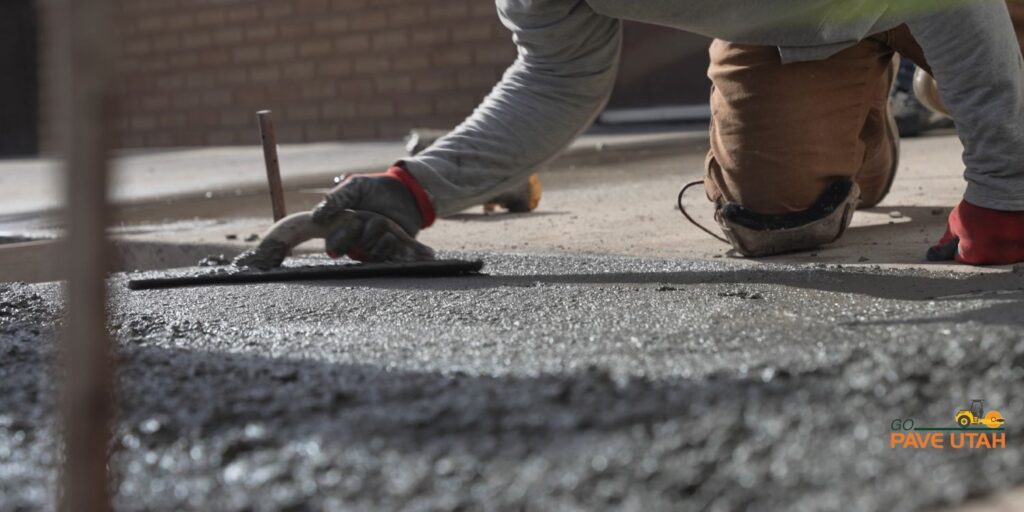
When planning improvements or repairs on a commercial property in Utah, one decision often overlooked is which paving material to use—and where. While asphalt is a popular and effective solution for many applications, there are specific situations where concrete is clearly the better choice. Understanding when to use each material can extend the life of your investment, reduce maintenance costs, and improve overall functionality for your tenants, staff, and visitors.
Certain areas on commercial properties endure constant stress, and that wear and tear adds up fast. High-traffic zones like loading docks, dumpster pads, utility access points, and equipment staging areas require more structural support than standard asphalt can provide. Asphalt, while flexible, can warp or rut under continuous pressure from heavy trucks or repeated use.
This is where concrete delivers long-term strength and stability. Its rigid structure resists deformation and maintains surface integrity under heavy loads. Choosing concrete in these zones can dramatically reduce the need for repairs and eliminate the cycle of patching and resurfacing that often comes with using asphalt in the wrong place.
In Utah, extreme temperature shifts—from freezing winters to hot, dry summers—take a toll on paved surfaces. Asphalt tends to soften in high heat and crack during freeze-thaw cycles, especially if drainage isn’t ideal. Concrete, on the other hand, stays more stable throughout these seasonal transitions.
Using concrete in the right spots—especially where exposure is intense—can add years to a surface’s lifespan and reduce the chance of early failure caused by weather-related stress.
While concrete is more expensive to install up front, it often proves more economical over time in the right applications. Surface areas built with concrete generally require fewer patches, less frequent replacement, and fewer interruptions to business operations. When you factor in the cost of repeated asphalt repairs in heavy-use areas, concrete quickly becomes the smarter long-term investment.
For commercial property owners who are thinking beyond this quarter's budget, concrete can be a strategic choice that pays off in smoother operations and fewer repair headaches.
This isn't an argument against asphalt. In fact, most commercial properties benefit from a combination of both materials. The key is knowing where each makes the most sense. Parking stalls, drive lanes, and general-use surfaces are usually better suited to asphalt because of its flexibility and ease of repair.
But when you're pouring pavement for areas that take a beating—or require more durability—concrete offers performance that asphalt simply can't match. It's about strategic placement, not choosing one material over the other entirely.
At Go Pave Utah, the team doesn’t just pour materials—they plan pavement with performance in mind. Their expertise in both commercial concrete and asphalt paving allows them to recommend the right surface for every square foot of your property. Whether you need to reinforce a loading zone, replace failing concrete, or design a multi-use layout, they deliver results built to last in Utah’s climate.
If you want a surface that holds up, looks professional, and supports the long-term health of your property, Go Pave Utah is ready to help you build it the right way.